- Guitar Songwriting: A compassionate Guide (Part 1)
- Writing your first guitar song
- MODIFYING AN EXISTING SONG
- FINDING INSPIRATION
- SONG STRUCTURE
- LYRICS
- And remember, the Sheet Music Library is here to help you with thousands of guitar, piano and voice scores!
Guitar Songwriting: A compassionate Guide (Part 1)
Writing your first guitar song
Writing a song is a gift to yourself—and sometimes a gift to the world. Song is one of the most powerful communication tools we have as human beings: a slice of life encapsulated in words, melody, and accompaniment. Many of us would like to write songs but find it
hard to get started. We find it very intimidating to commit ourselves to words, notes, and chords and then to paper, recordings, and listeners’ ears. Or, once we have started, we find it pretty much impossible to develop ideas into satisfactory songs. Here are some simple techniques that will help you get started and help you develop your ideas into songs that work.
MODIFYING AN EXISTING SONG
If getting the ball rolling is particularly intimidating, I encourage you to pick out a song that you admire and know the lyrics and melody to. It doesn’t matter if you can’t play the song. Remember that this is an exercise with the sole purpose of easing you slowly into your own creativity. The results will not be judged. Once you’ve chosen the song, choose a verse you like the feel of and rewrite it. One approach is to keep the same melody and write new words that fit the rhythm and the narrative purpose for that part of the song. You can also try leaving the words alone and rewriting the melody.
This might be a little harder because the melodies of our favorite songs tend to get deeply entrenched in our memory. One way to help make this technique work is to change the key of the song. A third approach is to create a new chord structure that fits with the original lyrics and melody. This can be a lot of fun for more experienced players who understand chord pro-gressions, inversions, and modes, but it might be intimidating to the less experienced musician. If you ever do feel intimidated during these exercises, try taking a small step–just changing one line or even one or two words, for example—rather than a huge stride.
FINDING INSPIRATION
OK, so you’re ready to go solo. What are you going to write about? The single most com-mon inspiration for songs is love: the lack of it, the hope for it, the experience of it, the loss of it. You might not want to bare your soul so intimately in your first song, though, so let’s look at some other options.
- Experiences. Has anything notable happened to you lately? Some happenstance that changed your way of seeing life, yourself, someone else, the world? Did you witness some-thing unusual? Remember a childhood memory, perhaps? There’s lots of potential here.
Political causes. Do you feel strongly about a particular cause? Write a song about it. This is a deep well of inspiration for the folk movement.
- History. Another great source for folkies. Lots of rich material.
- People. Think about someone you admire, someone who inspires you.
- Objects. This may sound like an odd suggestion, but objects have inspired many great songs. Artists write songs about bridges, buildings, ships … day-old banana pudding.
- Fantasies and made-up occurrences. They can be impossible, fanciful, or just plain untrue. One of my favorite songs, “Something About Him” by Brady Earnhart, was written about a school days experience the writer invented.
- Dreams. I was going to put this under fantasies, but there are invented situations that can and do come true.
Whatever subject you choose, you need to look carefully at how you think and feel about it. This is what actors mean when they ask, “What’s my motivation?” Does the sub-ject make you feel anger, pain, joy, tenderness? Where do your thoughts take you con-cerning this subject? At this point it would be a good idea to take notes on your thoughts and feelings. They’ll help you build a framework for the song and give shape to the way your words and melody develop.
SONG STRUCTURE
Writing a song is almost always an exercise that involves alternating structured thought with unstructured: intermittently letting go of intellectual control and expectations and allowing your creativity to flow. Structured thought allows order to be maintained, and unstructured brings in the unexpected or unconscious.
At this point, you need to decide what kind of song structure you’re going to use. Do you want to use a structure you’re familiar with from another artist’s work? Or do you want to let your poetic and melodic muse run free and just see what structure comes out? If there’s any doubt concerning structure, I’d recommend starting with a simple 12-bar blues. This structure has been hardwired into the musical awareness of the Western world for the last half century. It’s also sparse, so it encourages minimal use of words and limited melodic movement. Repetition is fundamental to the form.
In a 12-bar blues, the first line (sung over the first four bars) usually introduces the core subject matter and then comments on it, often in a way that brings tension to the subject. Most of the third bar and all of the fourth bar are generally instrumental. The next four bars might repeat the subject and expand on the comments and tension, and the last word usually rhymes with the last word of the first line. The seventh and eighth bars are usually instrumental. The last line should bring some kind of resolution to the subject, much as the melody and chordal turnaround brings resolution to the music. The 12th bar is most often the turnaround—a chordal/melodic progression, usually without words, that brings the song back to the top, to the next verse, which is structured like the first.
LYRICS
For most songwriters, the words of a song come first. Others start with the melody or with a chord progression and add the other elements one at a time. And for some, lyrics and melody come at the same time. Let’s start with the lyrics.
Go back to your notes on the general subject matter of the song you want to write. Do any of the words and phrases jump out at you? Do some of them seem to fit together either because of their meaning or because of their sound or rhythm?
For our 12-bar blues, I wrote down a few words about being a new songwriter, what it might mean and what it might feel like: trying to write a song I love songs want to do it music in my soul scary new going to do it determined. Looking at these words, I came up with the line:
I’m tryin’ to write a song and it’s kinda new to me
OK, that works. Note that I picked an easy rhyme (“me”) and remembered that this has to fit over three or so bars of a midpaced blues. For the second line, I wanted to repeat the core subject and comment further. I looked at the word scary and got:
I’m tryin’ to write a song and I’m scared as I can be
In order to stick to the standard 12-bar blues arrangement (which is now playing in my head), we need to add a brief pause to the lyrics after the word it’s in the first line and I’m in the second. This leaves us with:
I’m tryin’ to write a song and it’s… kinda new to me I’m tryin’ to write a song and I’m … scared as I can be
Hmm. That’s fine. Now I need a resolution. Going back to my original notes, I find the obvious resolution of “going to do it.” An alliteration—several words in a row starting with the same consonant—jumps out at me:
But I’m gonna get it goin’
I’ve got to admit that I’m a sucker for nice alliterations, and this one is particularly appealing because gonna get it goin’ comes with a built-in rhythm. Another look at my notes does nothing for me, so I write down the first thing that comes into my head:
But I’m gonna get it goin’… and I’m almost there you see
Now, I quite like the almost, but the there you see is pretty lame. Still, I never intended to leave things like that. I just wrote this line to help me come up with something more appropriate. Next I decide to be positive and note that I’ve come to this point fairly eas-ily—almost painlessly—and get excited about:
But I’m gonna get it goin’ almost painlessly
A few minutes’ detachment gets me to see that it’s an untidy rhyme and that painlessly somehow doesn’t fit with gonna get it goin’. So I fiddle with painlessly and find pain-free, which I like the feel of. When I attach it to the line, I get:
But I’m gonna get it goin’… and I’m almost there pain-free
So, now we have:
I’m tryin’to write a song and it’s… kinda new to me
I’m tryin’ to write a song and I’m… scared as I can be But I’m gonna get it goin”… and I’m almost there pain-free
A brief go at singing this verse shows me that tryin’ falls on the 1 of the first and fifth bars and that the pause in each line falls on the 1, with the next word starting on the off-beat. I’m fairly certain that the blues arrangement in my head will work best for this song, but I’ll try a few different feels and even recite the words aloud a few times (as straight as I can) to see if any other feel comes up. No, the blues feel seems to work best, but one thing that did jump out at me is that gonna get it goin’ begs to have the pace of the rhythm accelerated for those words.
Now I’ll sing the verse aloud unaccompanied until I’m happy with the way it flows. Only after this step do I pick up my guitar. It turns out I’m singing in the key of E minor, which leads me to a standard blues chord progression with Em, A7, and B7.
Alright! Our song is begun. I say our because I encourage you to write further verses based on the same structure. Perhaps when you’re done with this song, you’ll write your own from scratch. Remember to follow the steps we’ve discussed and not to bite off more than you can chew at any given moment. Good luck!
And remember, the Sheet Music Library is here to help you with thousands of guitar, piano and voice scores!

3 Hour Relaxing Guitar Music: Meditation Music, Instrumental Music, Calming Music, Soft Music
Browse in the Library:
| Artist or Composer / Score name | Cover | List of Contents |
|---|---|---|
| Trinity Classical Guitar 2020-2023 INITIAL |
 |
|
| Trinity Classical Guitar Grade 05 2010-2015 |
 |
|
| Trinity Electronic Keyboard Grade 1 Pieces & Technical work |
 |
Trinity Electronic Keyboard Grade 1 |
| Trinity Electronic Keyboard Grade 2 Pieces & Technical work |
 |
Trinity Electronic Keyboard Grade 2 |
| Trinity Electronic Keyboard Grade 6 Pieces & Technical work |
 |
Trinity Electronic Keyboard Grade 6 |
| Trinity Electronic Keyboard Grade 7 Pieces & Technical work |
 |
Trinity Electronic Keyboard Grade 7 |
| Trinity Electronic Keyboard Initial Grade 2019-2022 |
 |
|
| Trinity Electronic Keyboard Initial Pieces and Technical Work 2015-2018 |
 |
|
| Trinity Electronic Keyboard Sample Booklet |
 |
|
| Trinity Guitar 2016 2019 Grade 1 |
 |
|
| Trinity Guitar 2016 2019 Grade 2 |
 |
|
| Trinity Guitar 2016 2019 Grade 3 |
 |
|
| Trinity Guitar 2016 2019 Grade 4 |
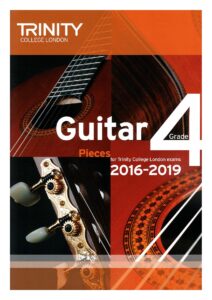 |
|
| Trinity Guitar 2016 2019 Grade 5 |
 |
|
| Trinity Guitar 2016 2019 Grade 6 |
 |
|
| Trinity Guitar 2016 2019 Grade 7 |
 |
|
| Trinity Guitar 2016 2019 Grade 8 |
 |
|
| Trinity Guitar 2016 2019 Initial |
 |
|
| Trinity Guitar Initial to Grade 5 Scales Arpeggios and studies |
 |
|
| Trinity Piano Grade 1 Pieces and exercises 2018 2020 |
 |
Trinity Piano Grade 1 Pieces and exercises 2018 2020 |
| Trinity Piano Grade 2 Pieces and exercises 2018 2020 |
 |
|
| Trinity Piano Grade 3 Pieces and exercises 2018 2020 |
 |
|
| Trinity Piano Grade 5 Pieces and exercises |
 |
|
| Trinity Piano Grade 6 (2021-2023) Extended Edition |
 |
Trinity Piano Grade 6 (2021-2023) Extended Edition |
| Trinity Piano Grade 6 Pieces and exercises |
 |
|
| Trinity Piano Initial Piano 2018-2020 | Trinity Piano Initial Piano 2018-2020 | Trinity Piano Initial Piano 2018-2020 |
| Trinity Piano Pieces And Exercises Grade 1 2015 2017 |
 |
Trinity Piano Pieces And Exercises Grade 1 2015 2017 |
| Trinity Piano Pieces And Exercises Grade 2 2015 2017 |
 |
Trinity Piano Pieces And Exercises Grade 2 2015 2017 |
| Trinity Piano Pieces Grade 1 2021-2023 |
 |
Trinity Piano Pieces Grade 1 2021-2023 |
| Trinity Piano Pieces Grade 2 12 Piano Pieces 2021-2023 |
 |
Trinity Piano Pieces Grade 2 12 Piano Pieces 2021-2023 |
| Trinity Rock and Pop Guitar Grade 8 (Contemporary and classic songs) with Tablature |
 |
Trinity Rock and Pop Guitar Grade 8 (Contemporary and classic songs) |
| Trinity Sight Reading Book 1 Sound at sight Piano |
 |
|
| Trinity Theory Of Music Workbook Grade 1 |
 |
Trinity Theory Of Music Workbook Grade 1 |
| True Silent Hill-2- Akira-Yamaoka |
 |
|
| Truman Show, The Reunion Philip Glass |
 |
|
| Trumpet Method Allen Vizzutti Trumpet Method Book 1 2 3 Complete |
 |
|
| Trumpet Method Anthony Plog Method For Trumpet Complete 7 books |
 |
|
| Trumpet Omnibook For B Flat Instruments Transcribed Exactly From Artist Recorded Solos |
 |
Trumpet Omnibook For B Flat Instruments Transcribed Exactly From Artist Recorded Solos |
| Trumpet Solos, Easy (The Canadian Brass) |
 |
|
| Trumpet, The (John Wallace, Alexander McGrattan) Yale Musical Instruments Series (Book) |
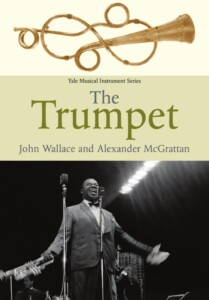 |
|
| Tsim Sha Tsui Stroll (Lust, Caution OST) Alexandre Desplat | ||
| Tu vuo’ fa’ l’Americano (Renato Carosone) | ||
| Tubular Bells (Mike Oldfield) |
 |
|
| Tubular Bells Intro – Mike Oldfield (Musescore File).mscz | ||
| Tuck Andress Europa by Carlos Santana guitar TABs |
 |
|
| Tuck Everlasting (The Musical) Music By Chris Miller Lyrics By Nathan Tysen (Piano Vocal Selections) |
 |
Tuck Everlasting (The Musical) Music By Chris Miller Lyrics By Nathan Tysen (Piano Vocal Selections) |
| Tunes For Ten Fingers A First Piano Book By Pauline Hall (Oxford) |
 |
|
| TV and Movie Themes (Piano, Vocal, Guitar) |
 |
TV and Movie Themes (Piano, Vocal, Guitar) |
| TV Detective Themes For Solo Piano |
 |
TV Detective Themes For Solo Piano |
| TV Fake Book, The |
 |
TV Fake Book, The |
| TV Songs Big Book Of TV Theme Songs 2nd Edition Piano Vocal Guitar |
 |
TV Songs Big Book Of TV Theme Songs 2nd Edition Piano Vocal Guitar Contents |
| Twelve Etudes Op 8 No 12 Scriabin (Musescore File).mscz | ||
| Twenty One Pilots – Goner |
 |
|
| Twenty One Pilots – Heathens – Piano |
 |
|
| Twenty One Pilots – Stressed Out Sheet Music | Twenty One Pilots – Stressed Out Sheet Music | |
| Twenty-Four Italian Songs And Arias Medium High |
 |
Twenty-Four Italian Songs And Arias, Medium High |
| Twice – Knock Knock Piano Solo |
 |
|
| Twilight – The Score – Carter Burwell |
 |
Twilight – The Score – CArter Burwell |
| Twilight saga – New Moon Music Score for Piano Solo Alexandre Desplat |
 |
Twilight.New.Moon.Music.Score.for.Piano.Solo).Alexandre.Desplat |
| Twin Peaks – Audreys Dance Angelo Badalamenti | ||
| Twin Peaks – Laura Palmers Theme Angelo Badalamenti | ||
| Twin Peaks – Twin Peaks Theme Angelo Badalamenti | ||
| Twinkle Twinkle Little Star Variations Suzuki Guitar Vol. 1 (Musescore File).mscz | ||
| Two Socks theme (Dances with Wolves OST) John Barry | ||
| Two Steps From Hell Blackheart Piano Sheet Music by Thomas Bergersen |
 |
|
| Two Steps From Hell Flight Of The Silverbird (Piano Solo) Thomas Bergersen |
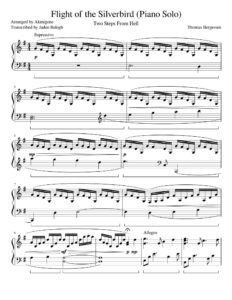 |
|
| Two Steps from Hell Invincible Sheet Music |
 |
|
| Two Steps From Hell Star Sky by Thomas Bergersen |
 |
|
| Txarango – La Dansa Del Vestit En Fa M |
 |
|
| Tymoczko, Prof. Dimitri MUSXI 105 Handouts 1 | Book Theory | |
| Tymoczko, Prof. Dimitri MUSIC 106 Handouts | Book Theory | |
| U2 The Piano Collection |
 |
U2 The Piano Collection |
| U2 – All I Want Is U | ||
| U2 – Best Of – (Guitar Tab Songbook) |
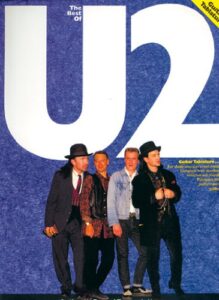 |
U2 – Best Of – (Guitar Tab Songbook) Contents — U2 – Best Of – (Guitar Tab Songbook) |
| U2 – How To Dismantle An Atomic Bomb (guitar tab songbook) |
 |
U2 – How To Dismantle An Atomic Bomb (guitar tab songbook) Contents — U2 – How To Dismantle An Atomic Bomb (guitar tab songbook) |
| U2 – October | ||
| U2 – Stuck In A Moment You Cant Get Out Of | ||
| U2 – The Best of 1990-2000 (Songbook) – U2 sheet music |
 |
U2 – The Best of 1990-2000 (Songbook) – U2 sheet music |
| U2 – The Best Of U2 (recorded versions) Guitar with TABs |
 |
U2 – Best Of – (Guitar Tab Songbook) |
| U2 – The Sweetest Thing | ||
| U2 Rock Score 5 Great Songs |
 |
|
| U2 The Joshua Tree Guitar Songbook with TABs |
 |
U2 The Joshua Tree Guitar Songbook |
| U2 WAR |
 |
U2 WAR |
| UB40 The Best Of – Piano, vocal & Guitar Songbook |
 |
UB40 The Best Of – Piano, vocal & Guitar Songbook |
| Ubi Caritas – Ola Gjeilo (Musescore File).mscz | ||
| Ubi Caritas -Ola Gjeilo-with piano improvisation |
 |
|
| Ukelele Chord Finder – Easy to use Guide |
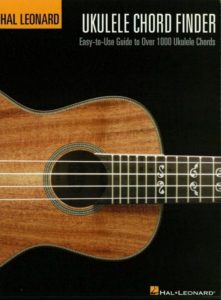 |
|
| Ukrainian folk song.mscz | ||
| Ukulele – 3-Chord Christmas Carols For Ukulele (Guitar Songbook Sheet Music) 30 Holiday Favorites With Just 3 Chords |
 |
Ukulele – 3-Chord Christmas Carols For Ukulele (Guitar Songbook Sheet Music) 30 Holiday Favorites With Just 3 Chords |
| Ukulele – Simple Songs For Ukulele (Guitar Sheet Music) |
 |
Ukulele – Simple Songs For Ukulele (Guitar Sheet Music) |
| Ukulele – The Daily Ukulele (Songbook) – Jim Beloff Guitar Sheet Music |
 |
|
| Ukulele for Kids Songbook Ukulele Method |
 |
|
| Ultimate 80s Songs |
 |
Ultimate 80s Songs |
| Ultimate Guitar Chord-Book |
 |
|
| Ultimate Guitar Songbook with TABs |
 |
Ultimate Guitar Songbook, The (110 songs) |
| Ultimate Latin Piano Riffs – Carlos Campos & Andrew D.Gordon |
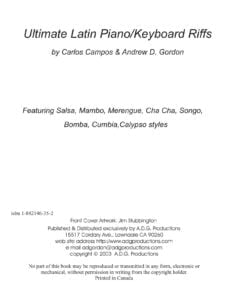 |
Ultimate Latin Piano Riffs – Carlos Campos & Andrew D.Gordon |
| Umberto Tozzi Gloria – Piano Vocal |
 |
|
| Un air de liberté (Et maintenant on va où OST) Khaled Mouzanar | ||
| Un anno d’amore (Mina) | ||
| Un Homme et son Chien (Philippe Rombi) | ||
| Un Monstre À Paris La Seine And I By Vanessa Paradis & Sean Lennon (Piano Vocal) |
 |
|
| Un Monstre à Paris – La Seine And I by Vanessa Paradis & Sean Lennon (Piano vocal).mscz | ||
| Una Mattina (Musescore File).mscz | ||
| Unchained Melody (Sheet Music) – The Righteous Brothers |
 |
|
| Under The Sea Ukulele Guitar From The Little Mermaid |
 |
|
| Under The Sea – Ukulele Guitar.mscz | ||
| Understanding chord progressions for Guitar by Arnie Berle |
 |
Understanding chord progressions for Guitar |
| Understanding The Fundamentals Of Classical Music Course Guide Modern Scholar (Book) |
 |
|
| Undertale Full OST – Toby Fox |
 |
|
| Undertale Megalovania Piano – Toby Fox |
 |
|
| Undertale – Home |
 |
|
| Undertale – Megalovania | ||
| Undertale OST – Hopes and Dreams Save the World |
 |
|
| UNDERTALE OST – Hopes and Dreams Save the World Piano Solo.mscz | ||
| Undertale OST – Hopes and DreamsSave the World.mscz | ||
| Undertale Ost – Nyeh Heh Heh! Bonetrousle |
 |
|
| Une Heure de Plus (Erik Berchot) | ||
| Unfaithful (Rihanna) | ||
| Unfinished Music – Richard Kramer |
 |
|
| Unforgettable – Irving Gordon (Nat King Cole Song) (Musescore File).mscz |
